Amazing video: Octopus changes color as it emerges from rock, scrambles toward ocean
ANGLESEY, WALES – Three coastal crawlers were recently treated to an amazing sight: An octopus crawled out from under a rock and changed color as it scampered toward the ocean.
"I met two other young people who were rockpooling, and one of them saw some tentacles sticking out from under a rock – they shouted over to me, so I ran over, and then we waited. It eventually came out and started crawling back towards the sea!" Ciara Taylor with the Marine Conservation Society told TMX. "We couldn't believe it."
Now you might be wondering how octopuses can change color, which colors they can become and how they can climb over land.
'EPICNESS': FRIENDLY OCTOPUS HUGS DIVER'S CAMERA IN MEMORABLE, UP-CLOSE ENCOUNTER
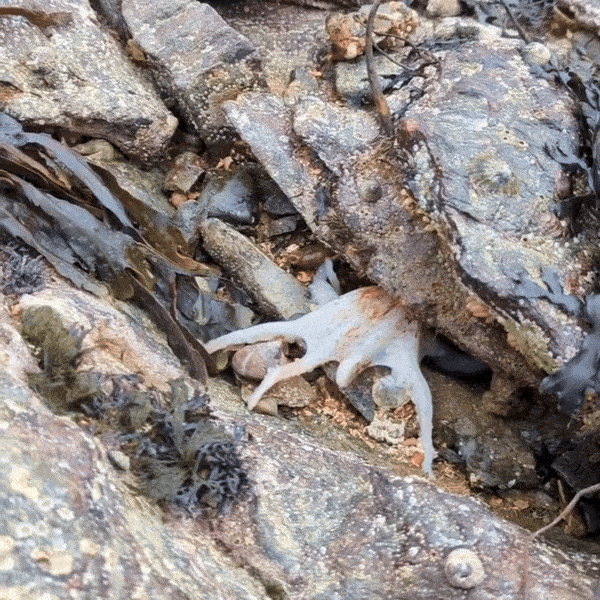
Octopuses can not only change color, but also texture, and some species can mimic other creatures' markings. This is quite a feat considering that the animal is color-blind. Our eight-legged sea creature can only see shades of gray, according to Two Oceans Aquarium in South Africa.
STUNNING VIDEO: RARE OCTOPUS NURSERY DISCOVERED OFF CALIFORNIA COAST
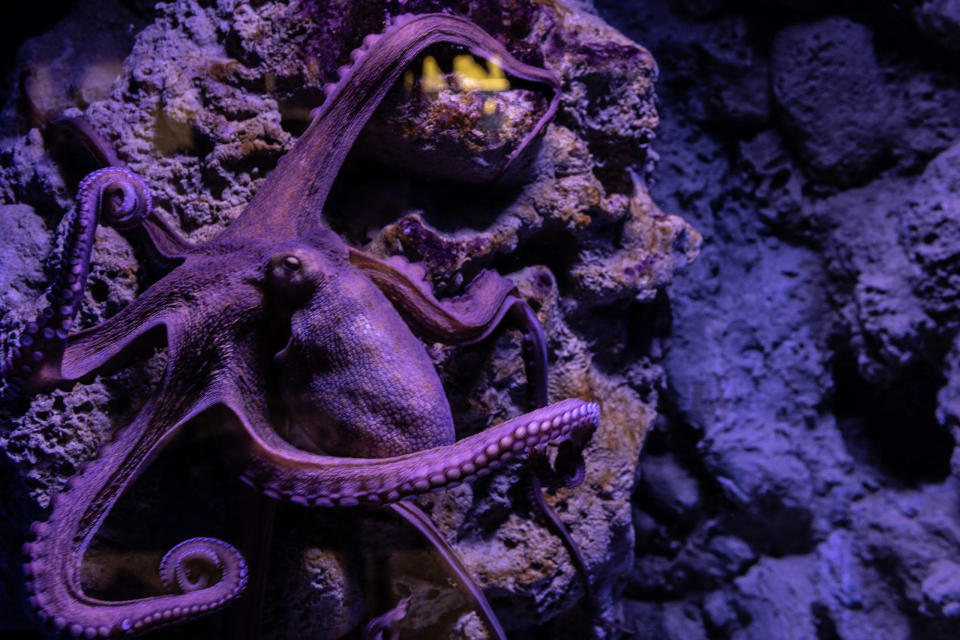
An octopus can actually feel color though, continued the aquarium. Opsins, chemicals in fibers on their arms, can sense colors because of the change of the wavelengths of light hitting the receptors. The specialized eyes can also break up the different wavelengths of light to assess color according to how much the light is bent. Only the octopus can do this.
"It uses its eyes to see the darkness, texture and layout of a scene. Its pupils distort light to get a rough idea of color," stated the Two Oceans blog. "That info is sent from its brain to the eight arm-brains that add colour information from their tiny fibres. The arms then decide how to tint, deflect and scatter light, while the main brain keeps the system in order. Its skin matches the texture of the surroundings, and the octopus moves into a position to blend in better."
WATCH: TOURISTS DISCOVER MASSIVE PACIFIC OCTOPUS TWISTING INSIDE WASHINGTON STATE PARK
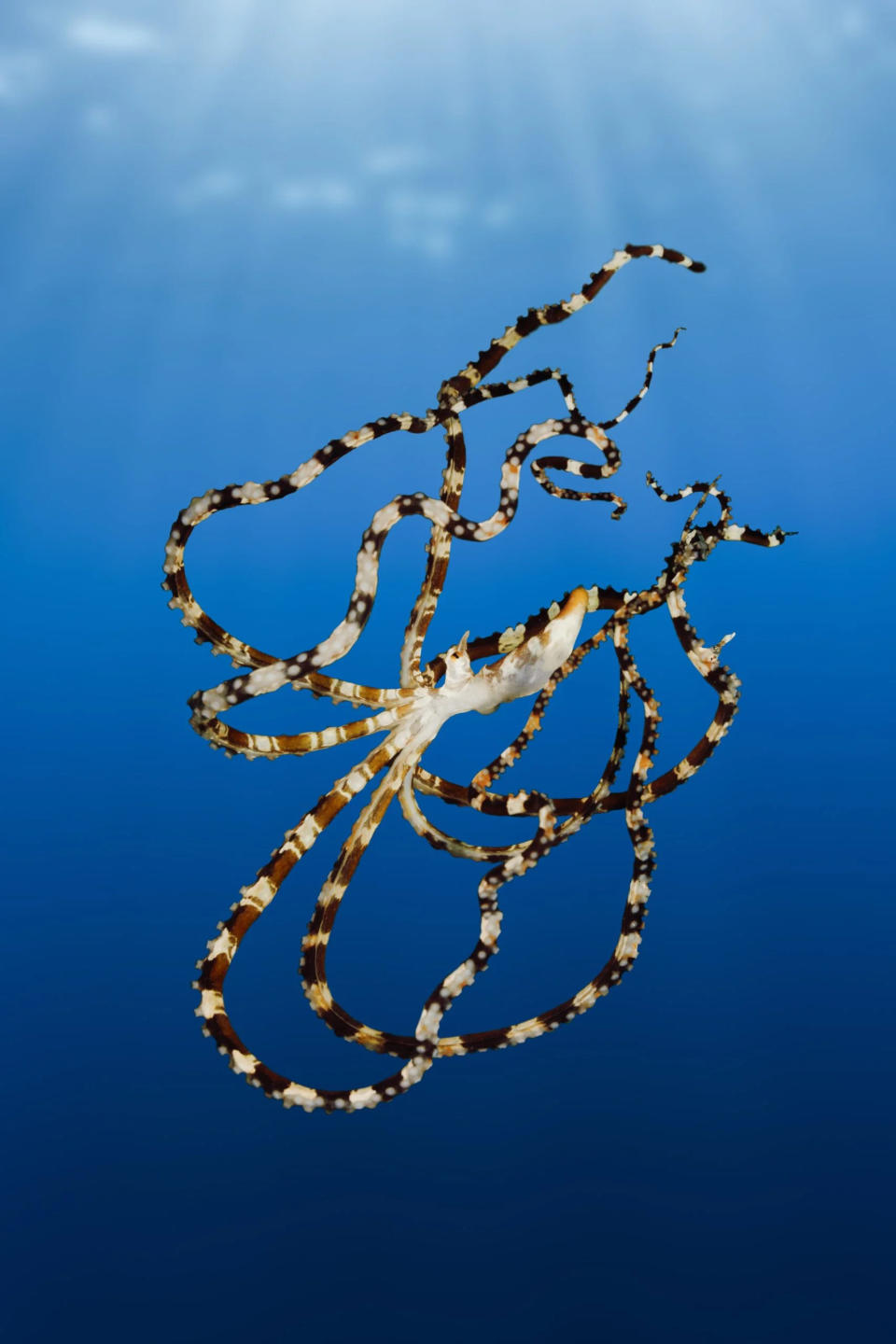
Octopuses also have chromatophores, cells across their skin with sacs of red, orange, brown, yellow or black pigment, according to Two Oceans. Stretching or squeezing the sacs allows more or less of each color to be visible for signaling and camouflage. As you see from the video, that happens fast.
Under the chromatophores lie iridophore cells with hundreds of tiny mirror-like structures called reflectosomes, Two Oceans continued. This is how the octopus can adopt blue and green colors, not found in the colored sacs.
The reflecting "mirrors" passively take on color, so an octopus can be protected with a bit of camouflage even if a predator sneaks up on it.
The mimic octopus can even change color to look like a venomous banded sea snake to scare away predators.
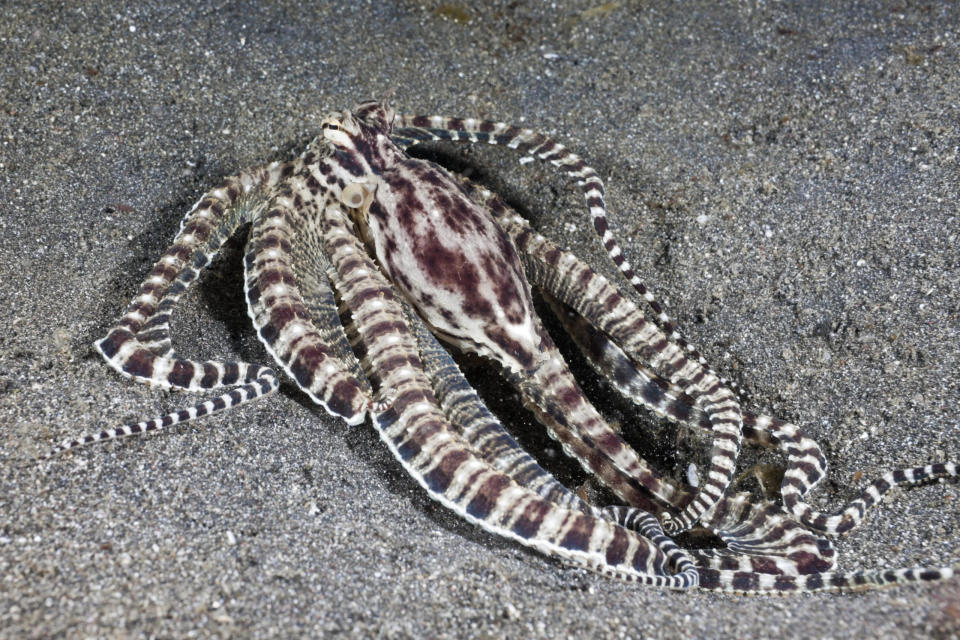
Finally, muscle bundles called papillae on the skin enable the animal to alter the skin texture to blend in.
And as you see from the video, an octopus can even use its tentacles to walk on land. This is especially helpful if it is trapped in a tidal pool or hunting for prey in tidal pools.
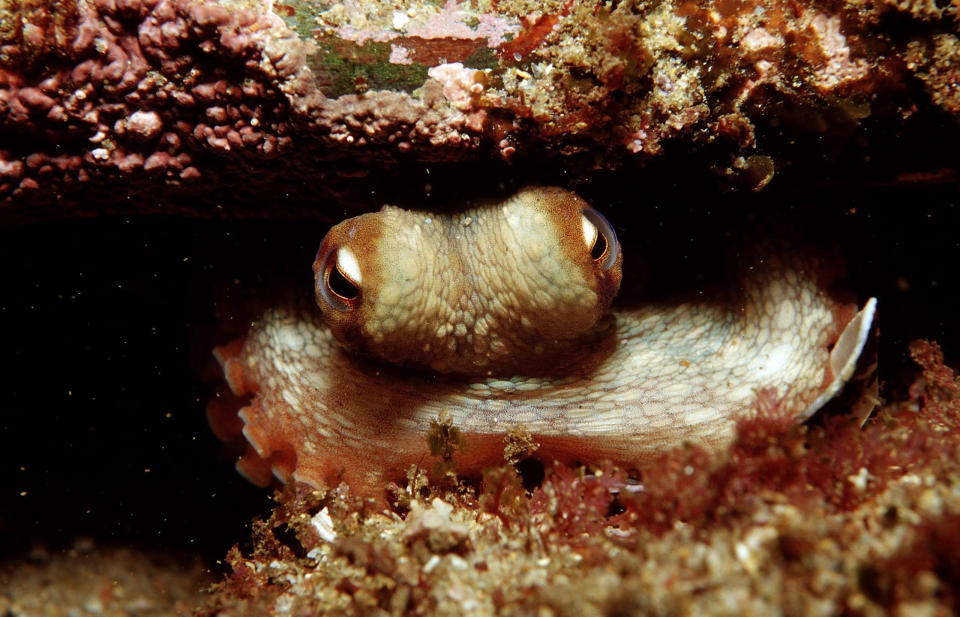
The Ocean Conservancy insists that "octopuses" is the only correct plural for octopus. But they also wrote that since octopuses are solitary creatures, "they would very much prefer we didn't have this discussion in the first place."
Merriam-Webster states that octopuses, octopi and octopodes are all correct.
Original article source: Amazing video: Octopus changes color as it emerges from rock, scrambles toward ocean

